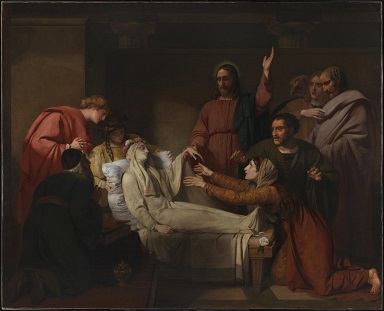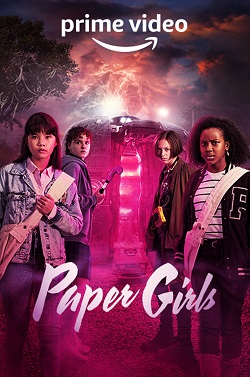This is mark Joseph “young” blog entry #476, on the subject of Versers Deduce.
With permission of Valdron Inc I have previously completed publishing my first nine Multiverser novels,
- Verse Three, Chapter One: The First Multiverser Novel,
- Old Verses New,
- For Better or Verse,
- Spy Verses,
- Garden of Versers,
- Versers Versus Versers,
- Re Verse All,
- In Verse Proportion, and
- Con Verse Lea,
in serialized form on the web (those links will take you to the table of contents for each book). Along with each book there was also a series of web log posts looking at the writing process, the decisions and choices that delivered the final product; those posts are indexed with the chapters in the tables of contents pages. Now as I am posting the tenth, In Version, written in collaboration with Eric R. Ashley, I am again offering a set of “behind the writings” insights. This “behind the writings” look may contain spoilers because it sometimes talks about my expectations for the futures of the characters and stories–although it sometimes raises ideas that were never pursued, as being written partially concurrently with the story it sometimes discusses where I thought it was headed. You might want to read the referenced chapters before reading this look at them. Links below (the section headings) will take you to the specific individual chapters being discussed, and there are (or will soon be) links on those pages to bring you back hopefully to the same point here.
This is the first post for this novel, covering chapters 1 through 12. There is also a section of the site, Multiverser Novel Support Pages, in which I have begun to place materials related to the novels beginning with character papers for the major characters, giving them at different stages as they move through the books.
These were originally written entirely third-person, that is, both Eric and I were “he”. Since the viewpoint characters were also always “he” in this book, that became very confusing, so I attempted to shift it back to “I/me/mine” for my contributions and “he/him/his” for Eric’s. This was a rather late decision in the process, and hopefully I got them all.
History of the series, including the reason it started, the origins of character names and details, and many of the ideas, are in earlier posts, and won’t be repeated here.
Quick links to discussions in this page:
Chapter 1, Slade 214
Chapter 2, Beam 158
Chapter 3, Kondor 223
Chapter 4, Brown 246
Chapter 5, Beam 159
Chapter 6, Slade 215
Chapter 7, Beam 160
Chapter 8, Kondor 224
Chapter 9, Brown 247
Chapter 10, Beam 161
Chapter 11, Slade 216
Chapter 12, Beam 162
The title problem resolved itself before I had even chosen whose chapter was first. I recognized that I was starting with a continuation of the story of the parakeet people facing an alien invasion, started with Bob and Shella Slade, Joe Kondor and Zeke Smith, and Derek and Vashti Brown, in In Verse Proportion (the Slades actually arrived in Versers Versus Versers, but barely started in that world), and that I could use the title In Version to suggest that this was a return to that story.
Meanwhile, there were good reasons to want to bring someone else into this. The big one was that if all three of my viewpoint characters were going to be in the same universe for a while, I was going to need a way to get another story going, and that meant another character. I had decided to keep Lauren’s location a mystery for a while, partly because I wasn’t certain what to do with her myself, partly because I was considering retiring her, so it wouldn’t be her. I similarly was uncertain what direction to go with Tommy, but didn’t see much excitement in her story. Beam, though, was definitely at a cliffhanger, and although I had failed to find answers to a lot of questions about his world, I had finished his character sheet from the last book, and was progressing rapidly with those of his companions, so I felt ready to tackle it.
That left the question of which character should start this. I wanted to delay Beam for the second chapter, partly because it would give me another couple days to finish the character sheets for his companions, and partly because he had been the main spotlight character in the previous book Con Verse Lea so an extra chapter’s delay would be good. Slade was commended, not merely because he was the character longest out of the spotlight, however briefly (In Verse Proportion ends Slade, Kondor, Brown), but because his expectation of battle would probably give more tension to start the book than the hopes for peace his companions had.
The critical parts of this first chapter had to be to bring readers up to speed on what had been happening at the end of In Verse Proportion, including introducing the central characters and their situation. Doing it from Slade’s perspective once again enabled me to create the expectation of the war.
I expected this to be the most anticipated story continuation, as I had left Beam fleeing from some unknown pursuer in what was from a publication standpoint about three chapters back at the end of Con Verse Lea. Although I had had some time to consider what to do, I hadn’t come up with much yet.
I decided that the next step was to get Beam’s party to a building they could fortify and defend, and to give more exposition on the nature of the enemy. I was about to write more about how the idea that they were biological zombies would give Beam thoughts on what to do, but decided to push that to the next chapter to give the feeling that Beam had thought about it for at least a few minutes before reaching conclusions.
I chose Kondor next mainly because Derek had been the viewpoint character of the last chapter written about the trio, but also because I figured he might have a breakthrough that would advance things and make anything I could at this moment think of for Joe somewhat moot.
As I developed the thought about Zeke detecting radio transmissions but being unable to decipher them, the idea of radio guidance systems came to mind, and I went forward from there.
I wasn’t sure how far or fast to move this. Understanding the alien communications is the first step, but it’s not going to be a simple one. On the one hand it shouldn’t happen too fast; on the other hand, it shouldn’t hold up the story.
I had several notions for this chapter, and moved through them quickly.
When Beam says “I wish I was that clever” I had originally and correctly typed “were”, but decided that Beam’s use of English is not precise enough to know that the subjunctive is the proper form there, and in the vernacular people would say “was”, so I changed it immediately.
I decided that the best next step for Slade was for him to teach his fighting students how to use the newly-developed firearms. I had to determine two things, one was how many students there were, and the other was what kind of firearms were available.
On the first question, I was sent back to re-read multiple chapters of In Verse Proportion to see what had been said about the class. It was sketchy; they had been referred to as a group. Because they easily paired off, there had to be an even number. Slade once commented that getting through all of them but the two best would take a long time, but he intended to spar against them individually until about half way through when he took them two at a time. My feeling was that twenty would mean ten pairs, but when you want things to appear random you avoid round numbers not because they don’t happen randomly but because they aren’t expected to. That meant either eighteen or twenty-two, and I went with eighteen. Adding Slade and the combat professor to the group would make it twenty, and twenty guns made sense.
As to the types of guns, I sort of wanted automatic pistols, but decided they were probably a bit too complicated for the birds to have developed so soon. They could do revolvers, and some kind of automatic reloading rifles. It made sense to do both, but one at a time. I decided on a revolver comparable to the Smith & Wesson.
I also realized that they wouldn’t have ear protection at this point, but they would have something like cotton.
I had marked this as a Kondor chapter, but couldn’t get started on it. Part of that was I was still finishing the second stage character papers from Con Verse Lea, but part of it was simply that I didn’t know what to do with Joe and Zeke at this moment. So I changed it to Beam, since his story was moving forward.
I decided that there would be too many windows to reinforce all of them, but that if the previous residents had survived any length of time they would have taken reasonably effective measures to protect themselves. At the moment I thought that they ran out of food and the last of them went for provisions and never made it back, but might revise that.
I sat on this for a couple days partly because I was otherwise occupied, but also because I couldn’t quite figure out how to move the story forward from Kondor’s perspective. The answer finally came, that since the trio are working together Derek’s story could move forward, which was really the main moving piece at the moment, by having Joe at a meeting of the versers.
The story unfolded from the starting point of the versers meeting to compare notes and specifically to learn what Derek had accomplished. It immediately became apparent that there would be birds there, and that Derek would probably have arranged to have a room suited to small meetings. It would mostly be the tension between Slade’s and Kondor’s views of the situation at this point, with the complications of learning to communicate fitting into that.
Eric Ashley had casually suggested to me maybe a week or so before this that he would like to collaborate on something. I had asked what, and then the thread was dropped. He re-initiated it at this point, and we agreed that he would join the efforts on creating this novel. I was in the process of bringing him up to speed on where it was, how it got here, and where I thought it was going.
I faced the problem at this point that I couldn’t really have Derek contact the aliens yet, and it would be difficult to keep his thread interesting if he didn’t. But as I pondered this, I decided that one thing in Derek’s character is that belief he has that The King–his name for God from the Sprite world–sends him places to do something, and to this point he hasn’t really thought that much about it here. So I started in that direction.
In the middle of writing this, I checked an article to confirm my understanding of amplitude modulation and frequency modulation radio and to find out how digital broadcasting works. What struck me is that somehow Derek has to make a copy of his ship’s radio, and it uses something that is not AM/FM, and something like digital is the only available answer at this point. I don’t know whether it’s feasible, but he has Joe and Zeke to help him, so maybe.
I stopped the chapter short because I wanted the cliffhanger. I had some very specific notions of what happens next, but felt the need for the tension there.
I needed the time to move, and the combat team to improve. I looked up the names used for Stumbler and Clumsy, because I wanted one of them to be the best shot with a gun, making the team better overall; and I decided it couldn’t really be Clumsy. Everything else grew organically from the setting.
I came back to Beam immediately to deal with the cliffhanger, and I knew what was going to happen in several cases. The important thing was to show that Beam’s people could deal a lot of damage, but the zombies could take quite a bit as well. Even so, it was late so I went to bed and didn’t get back to it until late the next night.
After writing this, I ran some of the skills I had attributed to Sophia by Kyler Young, who had created much of the Beam party in Garden of Versers, along with the other attacks on the zombies, and he seemed to agree with what had been suggested.
Eric was getting up to speed on the stories not yet published, and the book was still moving forward without him.
This has been the first behind-the-writings look at In Version. If there is interest and continued support from readers we will endeavor to continue with more behind-the-writings posts and another novel.



